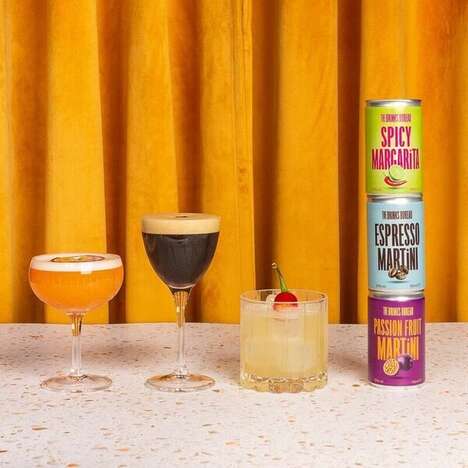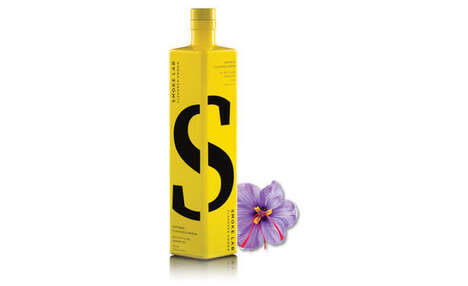Stirring Seasonal Strategies
An Interview With Zach Poelma, Senior Vice President of Strategy and Insights Center of Excellence at Southern Glazer’s Wine & Spirits
 In the spirited arena of beverage innovation, where trends fizz and fade like bubbles in a glass, Southern Glazer's Wine & Spirits stands as a master mixologist of market insight. This isn't just about predicting the next pumpkin spice craze or mapping the migration of mulled wine preferences across frost lines. It's about distilling raw data, customer whispers, and cross-industry pollination into a potent elixir of foresight. As we pull up a barstool to chat with Zach Poelma, Senior Vice President of Strategy and Insights Center of Excellence at Southern Glazer’s Wine & Spirits, we'll discover how they're turning the art of listening into the science of leading, and why in their world, every season is ripe for reinvention.
In the spirited arena of beverage innovation, where trends fizz and fade like bubbles in a glass, Southern Glazer's Wine & Spirits stands as a master mixologist of market insight. This isn't just about predicting the next pumpkin spice craze or mapping the migration of mulled wine preferences across frost lines. It's about distilling raw data, customer whispers, and cross-industry pollination into a potent elixir of foresight. As we pull up a barstool to chat with Zach Poelma, Senior Vice President of Strategy and Insights Center of Excellence at Southern Glazer’s Wine & Spirits, we'll discover how they're turning the art of listening into the science of leading, and why in their world, every season is ripe for reinvention. 1. What does innovation mean to you in the context of seasonal beverage trends, particularly with the rise of warm craft drinks?
Understanding seasonality and working with our supplier and customer partners to drive innovation in our industry is critical to driving growth. It is also important to understand where in the country seasonal beverage trends are more relevant at different times of the year to capitalize on these trends. Similar to how we see spritz and other sparkling cocktails or rosé perform really well during the summer months, we see a similar trend when it cools down, although it is not nearly as pronounced since consumers still tend to prefer cocktails that are cold vs. warm in most occasions.
For example, we see warm cocktails on a much higher number of cocktail menus when we head into the fall and winter in the Northeast, Midwest, and Central parts of the country, like Colorado, than we do in our Southern or Southwest markets. Each year, we see more and more operators taking trends they may see in other industries and innovate on their menus with their own version of a Hot Toddy or Spiked Apple Cider, or more recently, pumpkin options have become more and more popular. Overall though, innovation around warm drinks still seems to be focused primarily on the after dinner / dessert occasion.
2. How does your team at Southern Glazer's Wine & Spirits generate new ideas for seasonal beverage trends?
The most important thing is that Southern Glazer’s Wine & Spirits (Southern Glazer’s) is always putting an emphasis on listening to our customers and the consumers to see what they want. We put an emphasis on listening to our customers while also studying industry and consumer data for both the on-premise and off-premise very closely to help us identify what these trends are. If we look at only national data and don’t get out there and speak directly to customers, you can often miss certain emerging trends that may be popping up across certain parts of the country.
As an organization, we launched a program called Frontline Focus, which are multiple periods throughout the year where our senior leadership teams and corporate functions get out to our local markets for 3 to 4 days. We’ll ride in cars with our sales teams while we visit customers in their markets to understand not only what we can do better as a company, but also hear what they are seeing in their restaurants, bars or stores. Often times, these customers generate the best new ideas as they often spot trends well before they pop up in any national reports or data.
3. Do you have any specific rituals or processes for identifying and analyzing emerging trends like the current popularity of warm craft drinks?
Southern Glazer’s also has the Liquid Insights Tour that launched in 2022. The 2024 Tour will end up visiting a total of six cities across the country. This initiative is led by Brian Masilionis, Senior Director Customer Development National Accounts On-Premise. During the Tour, the Southern Glazer's team visits a wide variety of bars, hotels, restaurants, and other on premise locations that serve liquid libations to customers. They explored innovations driven by a new generation of diverse bartenders, as well as on-premise operators post-COVID recovery, all in an effort to develop unique insights to share with the Company's sales consultants and industry partners.
4. How do you identify trends in the beverage industry? What resources does your team use to spot consumer insights, especially regarding seasonal preferences?
Along with the efforts mentioned above with our Frontline Focus and Liquid Insights Tour, our Supplier Strategy team is constantly looking at both internal data sets via our Innovation Tool or our bi-annual Innovation Opportunity Dashboard. We also look at external data sources like Nielsen CGA, Dataessentials, Technomic and Numerator to identify new trends that are starting to emerge or potentially even opportunities that have been around for a while, but have started to see a noticeable uptick more recently with a certain set of consumers that requires us to dig in a bit deeper to understand if there’s more there that we should be focused on.
An opportunity here would be a cocktail like the Espresso Martini. While it was a cocktail we have seen around for a while, growth on menus has exploded in the last 3 years. We work to ensure that our supplier partners and our sales teams are executing against these opportunities with the great portfolio of brands we have. Finally, we have a team of mixologists scattered around the country in key markets that work closely with our sales teams and customers to ensure they are well-versed and aware of trends that are emerging and how to best capitalize on those.
5. What is the biggest challenge you face when innovating in the beverage industry, particularly with seasonal trends like warm craft drinks?
The biggest challenge is probably two fold. One, we need to ensure that what we are recommending to operators is ultimately going to be better for their bottom line. If a warm cocktail is going to come on the menu and replace another drink option, both us and the operator have to be confident that it will result in higher sales. Separately, consumers have so many choices nowadays and are so diverse, that innovation that may work in one set of accounts may not work in another set of accounts just up the street. That is why it’s important that our sales teams leverage the insights they have via SG Proof and other tools to really understand their customer and who their core consumers are.
6. Has there ever been an instance where another industry has influenced an innovation or trend in the beverage sector, particularly regarding seasonal drinks?
One area would be all of the seasonal drinks you see many of the coffee chains like Starbucks and others developing, and how those tie into seasonal flavors like pumpkin, apple or even espresso/coffee coming into the Bev Alc space. You’re also seeing a play on nostalgic brands that consumers remember from when they were younger. This could be in the form of RTDs or even cocktails that are including ingredients such as candy or flavors from many Millennials’ youth days.
One example above would be pumpkin spice is 3x more likely to be on a menu in the fall than it is during any other team of the year. Cider and apple flavors are 4.5x more likely. These are the flavors you are seeing pop up more frequently in warm cocktails along with more traditional drinks like a Hot Toddy or Irish Coffee. For example, recent data from Dataessentials showed that over 6.6% of menus now have Irish coffee on them. They also found that 10% of consumers prefer coffee with their whiskey, while 6% prefer cider and 5% prefer hot tea. Since about 1/3rd of whiskey consumption takes place during Oct/Nov/Dec, these are the types of cocktails we’d expect to continue to see show up as warm cocktail offerings.
7. Looking to the future, how do you think the warm craft drinks trend will evolve, and how will Southern Glazer's Wine & Spirits continue to be a leader in identifying and shaping beverage trends?
In colder over indexing parts of the country, it will continue to be an opportunity when you step off the slopes after a day of skiing, it provides warmth and comfort. In other parts of the country, we’ll probably see offerings here and there, but they’ll likely remain as a single choice or two on a menu and most likely as a post-dinner choice. For example, the Affogato is an Italian dessert with ice cream, hot espresso and then usually a liqueur – it is extremely popular and continues to grow. According to Dataessential, 70% of Gen Z consumers say they are interested in trying Chocolat Chaud, which is the French version of Hot Chocolate and many times comes spiked with a liqueur or even some other core spirits.
References: southernglazers


